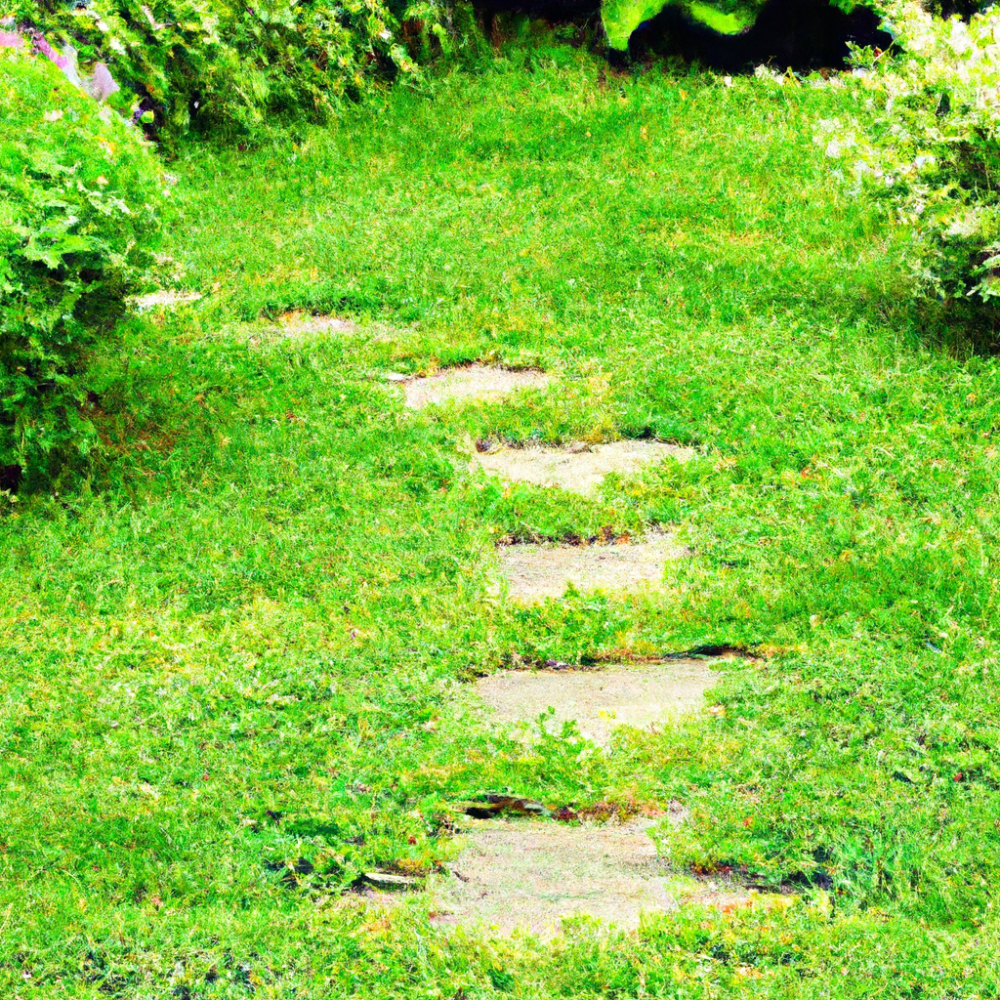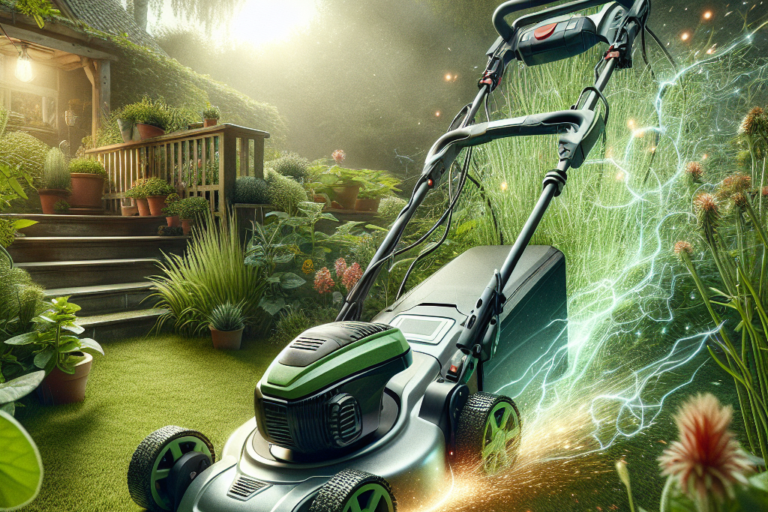Are pesky weeds invading your lush green lawn? If you’ve been wondering how to effectively control weeds and reclaim the beauty of your yard, look no further! In this article, we’ll explore some practical tips and tricks that will help you battle those unwanted guests and restore your lawn to its former glory. From proper mowing and watering techniques to the use of herbicides, we’ve got you covered. Say goodbye to frustrating weed growth and hello to a healthier, weed-free lawn!
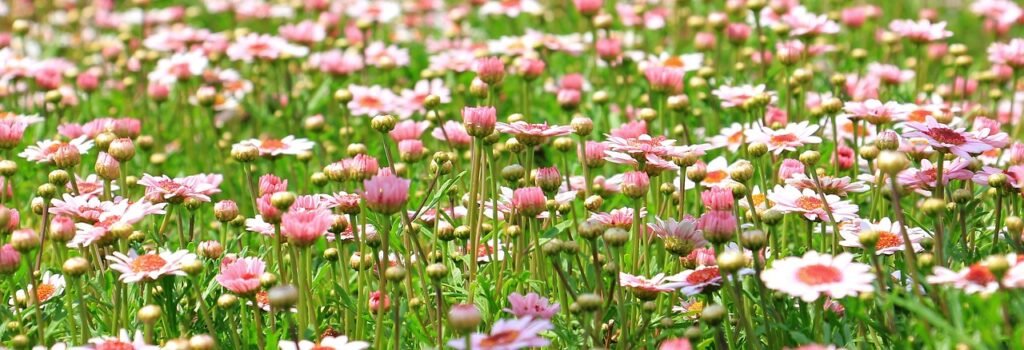
Understanding Weed Control
Importance of Weed Control in Lawns
Maintaining a beautiful and healthy lawn is a top priority for many homeowners. However, the presence of weeds can quickly ruin the aesthetics and overall health of your lawn. That’s where weed control comes in. Effective weed control is essential to ensure the vitality and beauty of your lawn. Weeds not only compete with the grass for essential nutrients, water, and sunlight, but they can also spread rapidly and take over large areas if left unchecked. By implementing proper weed control measures, you can maintain a lush, green lawn that you can be proud of.
Common Weeds Found in Lawns
Before delving into the different weed control methods, it’s important to familiarize yourself with the common weeds that may invade your lawn. Some of the common culprits include crabgrass, dandelions, clover, broadleaf weeds, and moss. Each of these weeds has its own unique characteristics and requires specific control strategies. By being able to identify these weeds, you can effectively target and eliminate them from your lawn.
Identifying Different Types of Weeds
Identifying different types of weeds can be a challenge, especially for those who are not well-versed in lawn care. However, by familiarizing yourself with the distinct features of each weed, you will be better equipped to tackle any weed-related issues that may arise. Crabgrass is a common warm-season weed with low-growing, spreading habit and coarse leaves. Dandelions are broadleaf weeds with yellow flowers and fluffy seed heads. Clover is recognizable by its three-leaf arrangement and small white or pink flowers. Broadleaf weeds encompass a wide range of plants with distinct characteristics, but they all have a single feature in common – broad leaves. Lastly, moss is a non-flowering plant that thrives in damp and shady areas of the lawn. By understanding the characteristics of these various weeds, you can tailor your weed control methods accordingly.
Preventive Measures
Maintaining Proper Lawn Care Practices
The first line of defense against weeds is maintaining proper lawn care practices. A healthy lawn is less susceptible to weed invasion, as it can outcompete the weeds for essential resources. Regular mowing, proper watering, and fertilizing are key components of a strong lawn care regimen. By cutting the grass to the proper height, watering deeply but infrequently, and providing the necessary nutrients through fertilization, you can create an environment that favors a thriving lawn and discourages weed growth.
Regular Mowing and Proper Height
Mowing your lawn at the right height is crucial for preventing weed growth. Different grass types have different recommended mowing heights, so it’s important to know the specific requirements for your lawn. Generally, mowing your lawn to a height of around 3 inches provides several benefits. It shades the soil, making it difficult for weeds to germinate and establish. Additionally, taller grass blades can produce more energy through photosynthesis, resulting in a stronger root system that can better compete with weeds for resources.
Proper Watering and Fertilization
Proper watering and fertilization are essential for a healthy lawn and effective weed control. Watering deeply and infrequently encourages the growth of deep roots, making your grass less susceptible to drought and weed competition. Additionally, it’s important to water in the morning to give the lawn ample time to dry throughout the day, reducing the risk of fungal diseases. Fertilizing your lawn with the appropriate nutrients helps promote healthy grass growth, which in turn, suppresses weed establishment.
Applying Pre-emergent Herbicides
Pre-emergent herbicides are a valuable tool in preventing weed growth before it even starts. These herbicides are applied before weed seeds germinate, forming a barrier in the soil that inhibits their growth. Timing is critical when using pre-emergent herbicides, as they need to be applied before the target weed’s germination period. While these herbicides are effective in preventing weed seedling emergence, they won’t eliminate existing weeds. Therefore, it’s important to combine pre-emergent herbicides with other weed control methods for comprehensive weed management.
Mechanical Weed Control
Hand Pulling and Digging
One of the simplest and most straightforward methods of weed control is hand pulling and digging. This method involves physically removing weeds from the root, ensuring they won’t regrow. It is particularly effective for small or isolated areas of weed infestation. When hand pulling, it’s crucial to grasp the weed as close to the base as possible, with a firm grip on the stem or leaves. Gently but firmly pull upwards, making sure to remove the entire root system. Digging is similar to hand pulling but involves using a small gardening tool, such as a hand trowel or fork, to loosen the soil around the weed before pulling it out.
Using a Weed Puller Tool
For those who have larger areas or struggle with manual weed control, using a weed puller tool can be a game-changer. Weed pullers, also known as weeders or weed extractors, are specifically designed tools that help you easily remove weeds from the ground. These tools typically have long handles and a V-shaped blade or claw at the end, which grabs hold of the weed and allows for effortless extraction. Using a weed puller tool saves time and effort and can be particularly useful for individuals with physical limitations or large lawns.
Lawn Cultivation and Aeration
Lawn cultivation and aeration are two techniques that not only promote healthy grass growth but also aid in weed control. Cultivating the soil involves breaking it up with a cultivator or garden fork to disrupt the weed’s root system and inhibit its growth. This method is particularly effective for annual weeds that have shallow root systems. Aeration, on the other hand, involves creating small holes in the soil to relieve compaction and improve the flow of oxygen, water, and nutrients to the grass roots. By promoting a healthier lawn, you make it more difficult for weeds to establish themselves.
Chemical Weed Control
Selective Herbicides
Selective herbicides are a popular and effective method of weed control. They target specific weeds while leaving the surrounding grass unharmed. These herbicides work by disrupting the weed’s growth process or by inhibiting the production of essential proteins and enzymes. Selective herbicides are available in liquid or granular form and can be applied using a sprayer or spreader. When using selective herbicides, it’s crucial to carefully follow the manufacturer’s instructions regarding application rates, timing, and safety precautions.
Non-Selective Herbicides
Non-selective herbicides, as the name suggests, do not discriminate between weeds and desirable plants. These herbicides are effective at eliminating all vegetation they come into contact with, making them ideal for spot treatments or clearing large areas before reseeding. Non-selective herbicides are often used to control weeds in paths, driveways, or other areas where grass is not desired. When using these herbicides, it’s important to exercise caution, as they can harm or kill any plant they come into contact with.
Using Herbicide Sprays Effectively
Using herbicide sprays effectively requires precision and care. Depending on the type of herbicide you’re using, it may need to be mixed with water or applied directly from a pre-mixed bottle. The application method can vary, with options such as handheld sprayers, backpack sprayers, or hose-end sprayers. When applying herbicide sprays, it’s important to follow the recommended application rate and technique specified on the product label. Be sure to target the leaves and stems of the weeds while avoiding contact with desirable plants. Additionally, it’s important to consider the weather conditions, as certain herbicides are more effective when applied on sunny days with little wind.
Spot Treatment vs. Broadcast Application
Spot treatment and broadcast application are two common methods of applying herbicides. Spot treatment entails targeting individual weeds or small patches of weeds with the herbicide, minimizing the impact on non-target plants. This method is particularly useful when dealing with scattered or isolated weed growth. On the other hand, broadcast application involves applying the herbicide uniformly over the entire lawn or a large area. This technique is beneficial when the weed infestation is widespread or when reseeding the entire area is planned. Whether using spot treatment or broadcast application, always follow the manufacturer’s instructions and exercise caution to avoid damaging desirable vegetation.

Organic Weed Control
Mulching to Suppress Weeds
Mulching is a natural and environmentally friendly method of weed control. By covering the soil surface with a layer of organic material such as wood chips, straw, or compost, you can effectively suppress weed growth. The mulch acts as a physical barrier, preventing weed seeds from reaching the soil and germinating. Additionally, organic mulch breaks down over time, enriching the soil and providing nutrients to the existing plants. When using mulch, it’s important to apply a layer that is at least 2-4 inches thick to ensure effective weed suppression.
Using Corn Gluten Meal
Corn gluten meal is a natural byproduct of the corn milling process and is gaining popularity as an organic weed control option. This product contains a natural protein that inhibits seed germination, effectively suppressing the growth of weed seeds. Corn gluten meal is safe for use around established plants, making it a suitable option for weed prevention in flower beds, vegetable gardens, and other landscaped areas. To use corn gluten meal, apply it in early spring or fall before weed seeds start to germinate, following the recommended application rates provided by the manufacturer.
Vinegar and Salt Solutions
Vinegar and salt solutions are common household products that can be used as natural herbicides. The acetic acid in vinegar acts as a desiccant, drying out and killing the foliage of the weeds. Salt, specifically table salt or rock salt, can help dehydrate the weeds and inhibit their growth. To make a vinegar and salt solution, mix equal parts of vinegar and water, and add a small amount of salt. Be cautious when using vinegar and salt solutions, as they can harm desirable plants and may also alter the soil’s pH if used excessively. Spot treat the weeds carefully, aiming to target the foliage rather than the soil.
Solarization
Solarization is a technique that utilizes the sun’s heat to kill weed seeds and small plants. It involves covering the infested area with a clear plastic sheet, which traps heat and raises the soil temperature to lethal levels. Solarization is particularly effective against annual weeds and can help reduce their population before planting new vegetation. To solarize an area, prepare the soil by removing any existing vegetation and debris, level the soil, and moisten it. Lay the clear plastic sheet over the area, ensuring it is in direct contact with the soil. Leave the plastic in place for several weeks, ideally during the hottest period of the year, to allow the sun’s heat to eliminate the weeds.
Integrated Weed Management
Combining Different Weed Control Methods
Integrated Weed Management (IWM) emphasizes the use of a combination of approaches to manage weeds effectively. By utilizing various methods concurrently, you can target weeds from multiple angles and increase the overall success of weed control. IWM incorporates cultural, mechanical, chemical, and biological strategies to create a comprehensive approach tailored to specific weed problems. By combining practices such as proper lawn care, regular mowing, manual weed removal, and judicious use of herbicides, you can develop a robust strategy that maximizes weed control while minimizing the impact on the environment.
Timing and Rotating Control Strategies
Timing is crucial when implementing weed control methods. For the best results, it’s important to time your interventions to coincide with the growth stages of the target weeds. For instance, herbicide applications are typically more effective when applied to young, actively growing weeds. Likewise, mechanical control methods such as hand pulling and digging are easier when weeds are small and have not yet established a strong root system. Rotating control strategies can also be advantageous. By alternating between methods, weeds are less likely to develop resistance to specific control measures, ensuring their continued effectiveness over time.
Monitoring and Regular Inspection
Monitoring and regular inspection are essential components of an integrated weed management plan. Keeping a vigilant eye on your lawn allows you to identify weed problems early on, increasing the chances of successful control. Regularly inspect your lawn for signs of weed growth, paying close attention to areas that may be susceptible to weed invasion, such as thin or bare patches. By promptly addressing weed issues as they arise, you can prevent them from spreading and minimize the need for more intensive control measures.
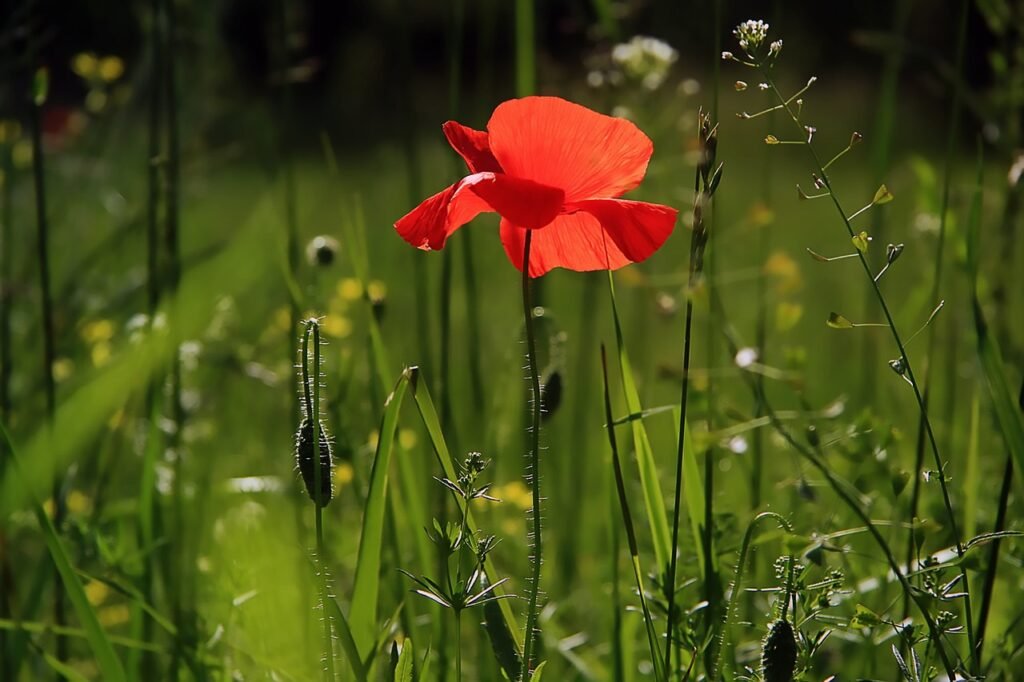
Dealing with Specific Weeds
Crabgrass
Crabgrass is a warm-season annual weed that can quickly take over lawns if not controlled. Effective pre-emergent herbicide application before crabgrass germination is key to preventing its establishment. For small patches or scattered crabgrass, hand pulling or using a weed puller tool can be effective. Maintaining a dense and healthy lawn is also crucial, as it discourages crabgrass growth. Regular overseeding, proper mowing height, and adequate watering and fertilization are essential practices for preventing crabgrass.
Dandelions
Dandelions are among the most recognizable and stubborn weeds. They have deep taproots that make hand pulling a challenge. However, if you are persistent and ensure you remove the entire root system, hand pulling can be effective. For larger areas, selective herbicides specifically formulated for broadleaf weed control, including dandelions, can be employed. Mowing your lawn at the proper height can help prevent dandelions from flowering and producing seeds. Regular overseeding and maintaining a thick lawn also provide competition and suppress dandelion growth.
Clover
Clover is a perennial weed with three-leaf clusters and small white or pink flowers. Hand pulling or digging can be effective for small patches of clover. Applying a post-emergent herbicide designed for broadleaf weed control is another option for larger areas. Maintaining proper lawn care practices, such as consistent mowing height and regular overseeding, is crucial for preventing and suppressing clover growth.
Broadleaf Weeds
Broadleaf weeds encompass a wide range of plants, including dandelions, clover, and many others. Selective herbicides formulated for broadleaf weed control can effectively target these weeds without harming the surrounding grass. Spot treatments using herbicide sprays are often recommended for isolated patches or individual plants. Regular mowing at the proper height, adequate watering, and fertilization are important for maintaining a healthy lawn that can compete with broadleaf weeds.
Moss
Moss is a non-flowering plant that thrives in damp and shaded areas of the lawn. Moss indicates underlying problems such as poor drainage or compacted soil. Improving drainage and reducing shade can help discourage moss growth. Additionally, dethatching and aerating the lawn can help improve airflow and soil conditions, making it less favorable for moss to thrive. If moss presence persists, the use of moss-specific herbicides or iron-based products can be considered.
Proper Disposal of Weeds
Composting as an Environmentally Friendly Option
Composting is an environmentally friendly method of disposing of weeds. Instead of throwing them away, you can recycle the organic matter and nutrients present in the weeds by incorporating them into a compost pile. The heat generated during the composting process helps break down the weeds, killing any viable seeds and preventing them from spreading. It’s important to ensure that your compost pile reaches the appropriate temperature for effective weed seed destruction. Avoid composting weeds that have gone to seed or have invasive tendencies to prevent unintentional spread in your garden.
Bagging and Disposing
For weeds that are particularly invasive or contain viable seeds, it may be best to bag them up and dispose of them in your curbside green waste bin or designated municipal composting facility. Bagging prevents the spread of weed seeds and reduces the risk of them taking root in other areas of your property. Care should be taken to properly seal the bags to prevent weed fragments from escaping during transport and disposal.
Avoiding Weed Seed Spread
To prevent the unintentional spread of weed seeds, it is crucial to exercise caution throughout the weed control process. Avoid transporting weeds or weed-infested plant material to other areas of your lawn or garden. Clean garden tools and equipment thoroughly after use, especially if they have come into contact with weeds. Dispose of weeds responsibly, making sure to prevent any seeds or plant fragments from being dispersed in the environment. Taking these extra precautions will help protect your lawn and surrounding areas from potential reinfestation.
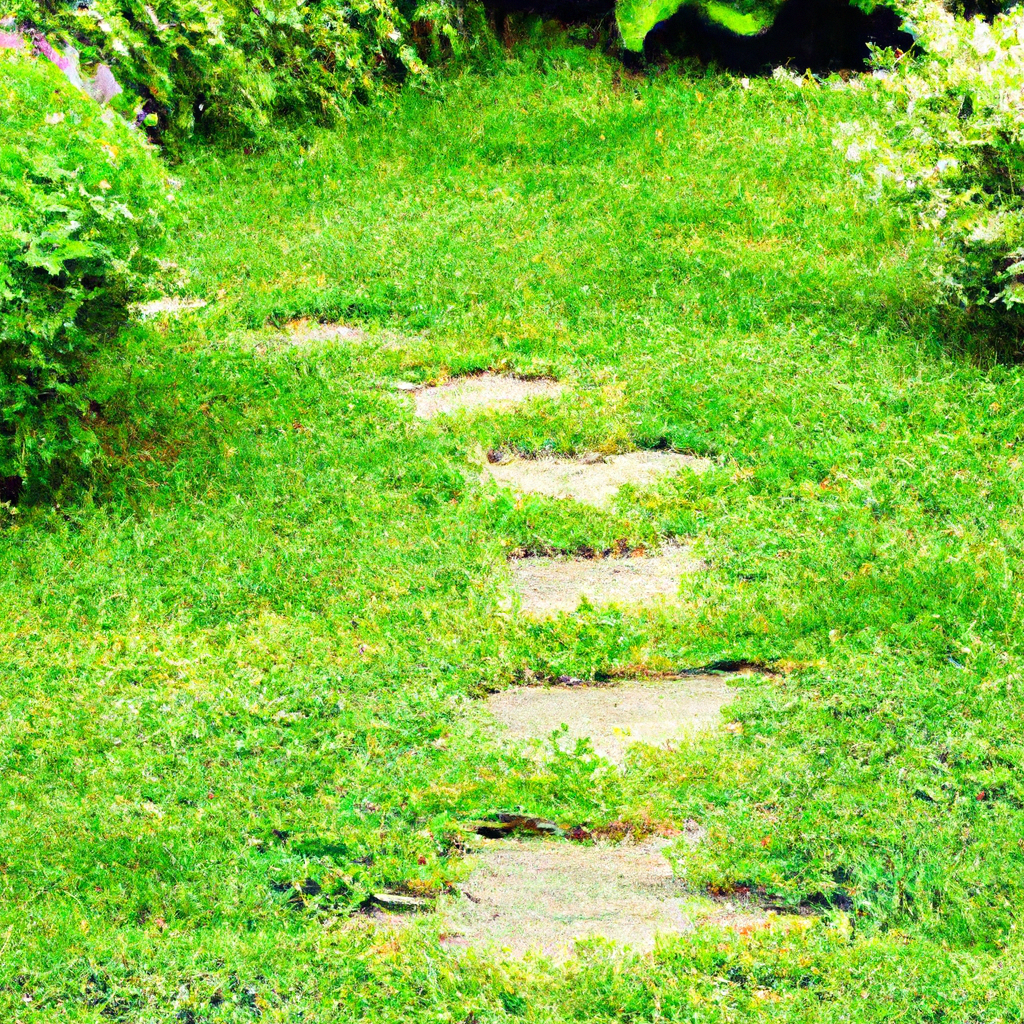
Tips for Long-Term Weed Control
Maintain a Vigilant Eye
The key to long-term weed control is to maintain a vigilant eye and address weed issues promptly. Regularly inspect your lawn, paying attention to any signs of weed growth and treating them as soon as possible. By catching and eliminating weeds in their early stages, you can prevent them from spreading and becoming more difficult to control.
Promote a Dense and Healthy Lawn
A dense and healthy lawn is your best defense against weeds. By ensuring that your lawn is thick and well-established, you create a competitive environment where weeds have a harder time establishing themselves. Regular overseeding, proper mowing height, appropriate watering, and fertilization are all crucial components of maintaining a dense and healthy lawn.
Weed Control in Different Seasons
Weed control should be approached differently depending on the season. Cool-season weeds, such as dandelions and chickweed, tend to thrive in the cooler months, while warm-season weeds like crabgrass and purslane are prevalent during the warmer months. By understanding the life cycles and growth patterns of common weeds in your area, you can tailor your weed control methods to target them effectively in each season.
Regularly Overseeding
Regular overseeding is an excellent practice for maintaining a healthy lawn while also helping fill in bare or thin areas that may be susceptible to weed invasion. Overseeding introduces new grass seed to the lawn, promoting thicker and denser growth. The competition from the new grass helps suppress weed growth, making it an effective long-term weed control strategy.
Seeking Professional Help
When to Hire a Lawn Care Professional
While many homeowners prefer to take care of their lawns themselves, there may be instances where seeking professional help is necessary. If you are facing widespread weed infestation that seems beyond your control, a lawn care professional can provide the expertise and resources needed to effectively address the problem. Additionally, if you are unsure about which weed control methods to employ or if you have physical limitations that make manual weed removal challenging, a professional can offer guidance and assistance.
Choosing a Weed Control Service
When selecting a weed control service, it’s important to do your research and choose a reputable and experienced provider. Look for companies with a proven track record of successful weed control in your area. Seek out recommendations from friends, neighbors, or local gardening clubs. Ask for references and inquire about the specific weed control methods and products they use. It’s also essential to ensure that the company is licensed and insured for your peace of mind.
Benefits of Professional Expertise
Hiring a professional for your weed control needs offers several benefits. Professionals have in-depth knowledge of weed biology, including their life cycles, growth habits, and control strategies. They can accurately assess your lawn’s condition, identify weed species, and develop a customized weed control plan based on your specific needs. Professionals also have access to specialized equipment and professional-grade herbicides that may not be readily available to homeowners. By entrusting your weed control to a professional, you can have confidence in the effectiveness of the chosen methods and the long-term health of your lawn.
In conclusion, effective weed control is crucial for maintaining a beautiful and healthy lawn. Implementing a combination of preventive, mechanical, chemical, organic, and integrated weed management strategies is key to achieving long-term success. By understanding the importance of weed control, identifying different types of weeds, and implementing proper lawn care practices, you can create an environment that discourages weed growth. With the knowledge and tips provided in this comprehensive article, you are now equipped to effectively control weeds in your lawn and enjoy a lush, weed-free oasis.
